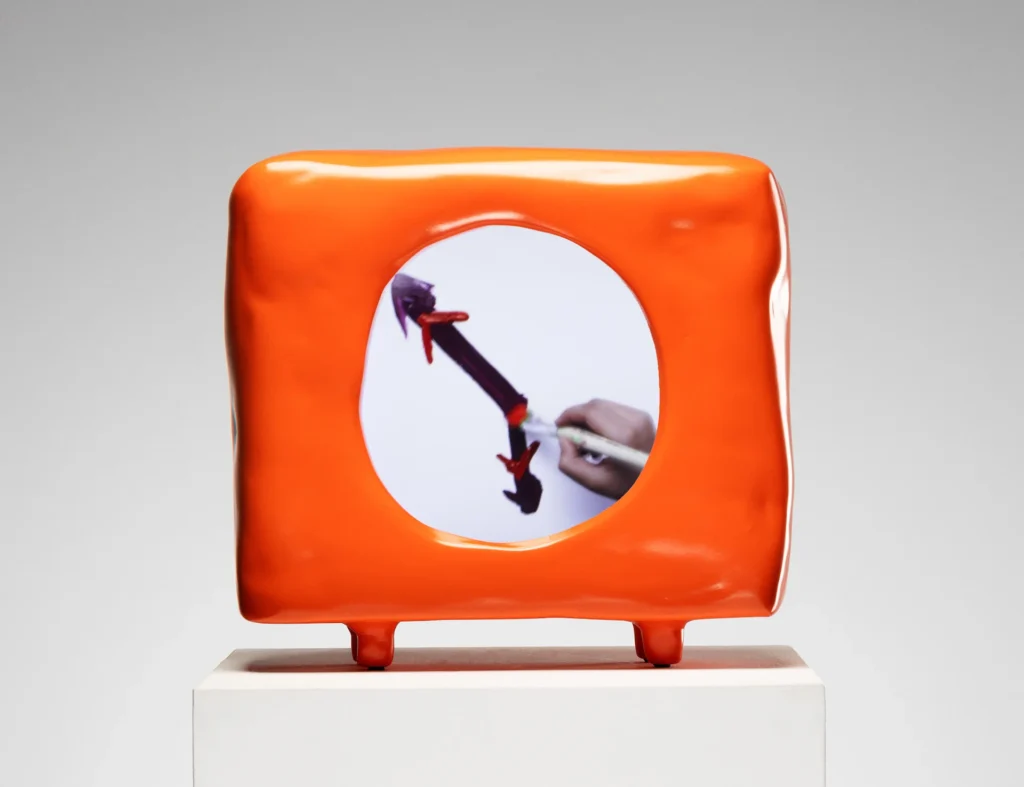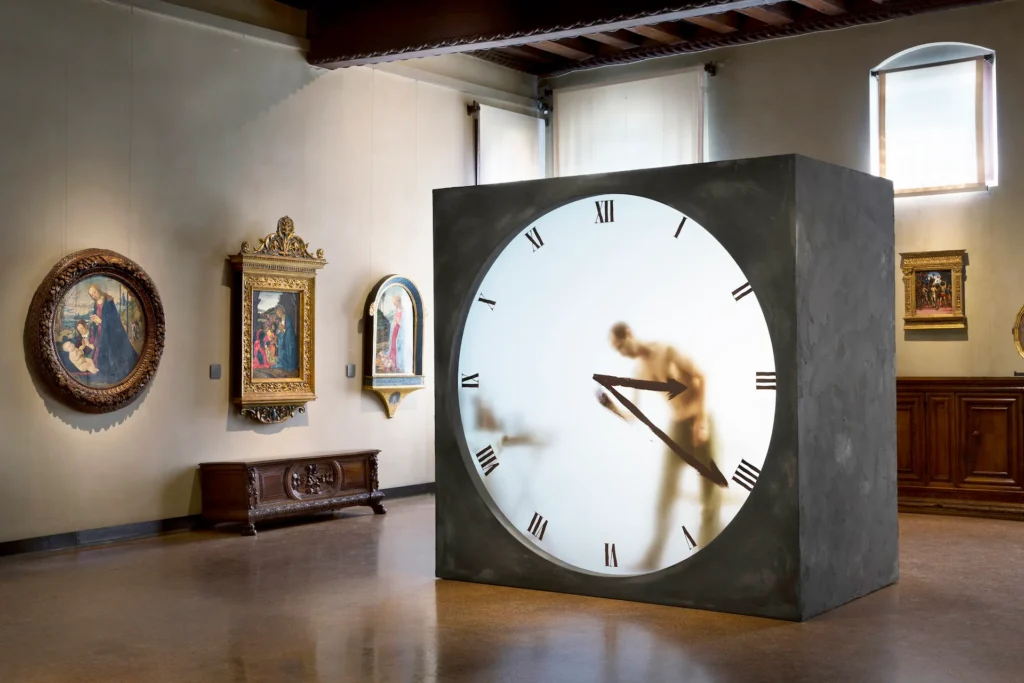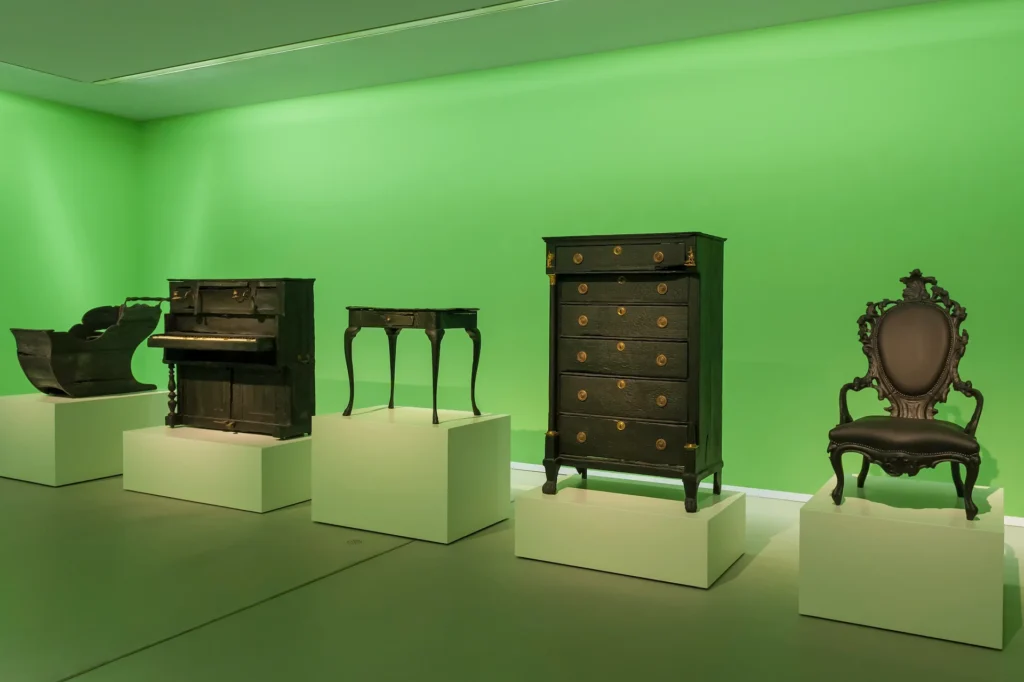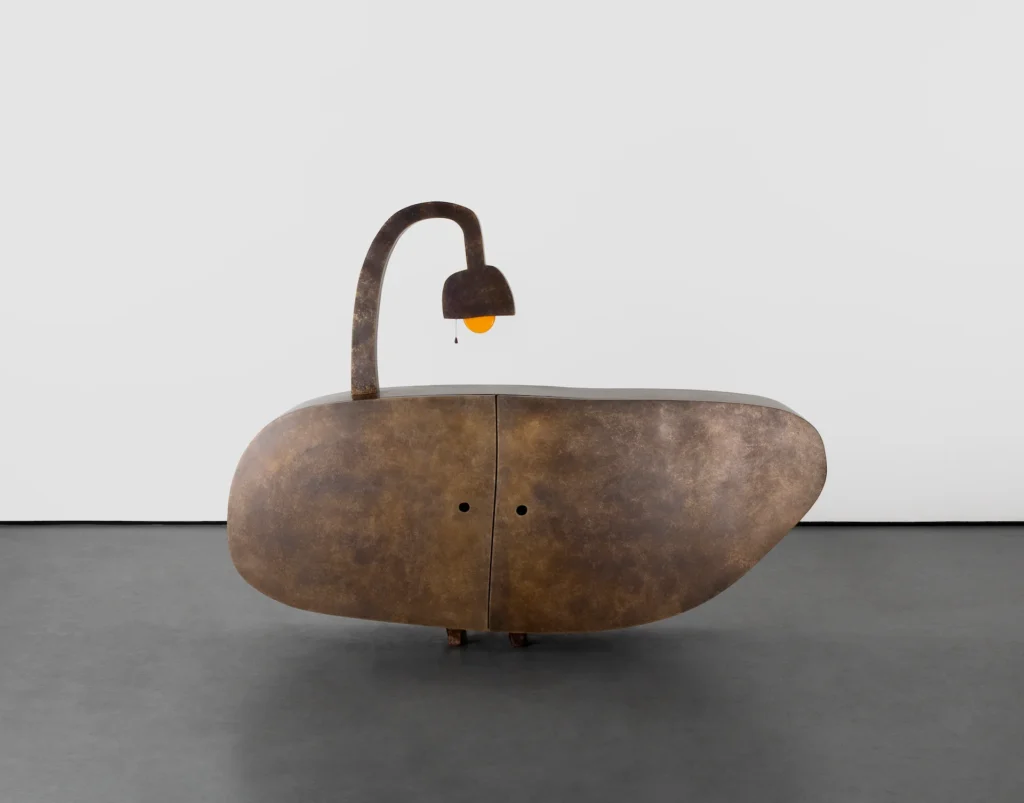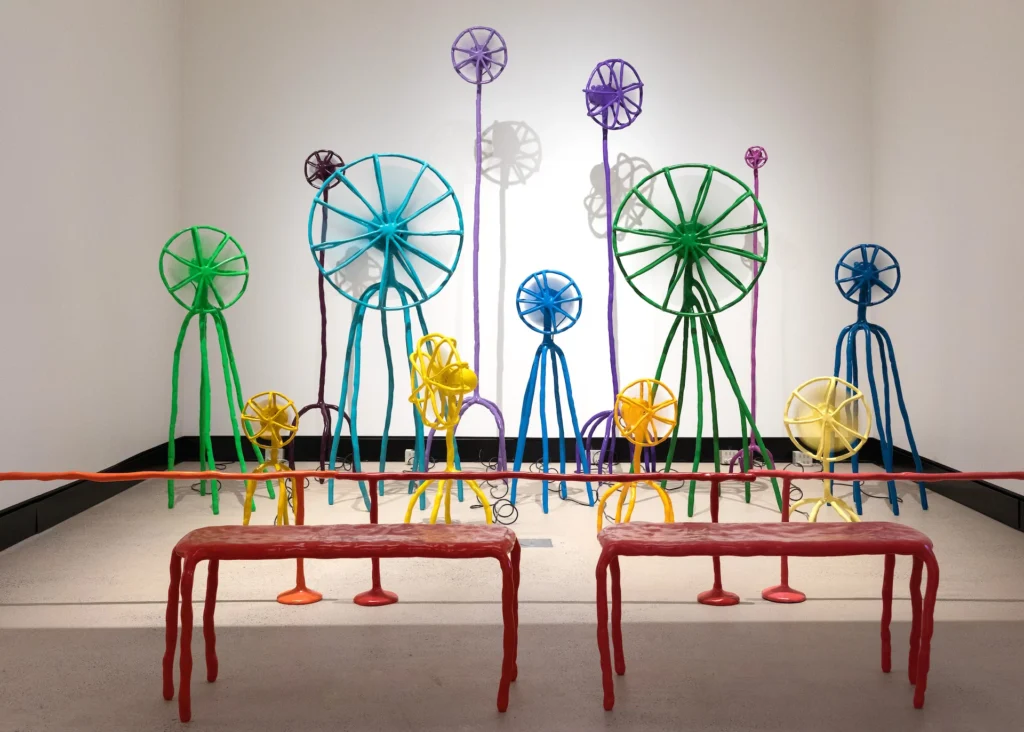
“Maarten Baas is the kind of man that Hollywood used to refer to as the silent type. Observant and modest but confident. Relaxed, polite, and very present. Maybe not very interested at first. He’s definitely not an extrovert, but Maarten is plenty animated inside. I have always believed he participates in several internal dialogues at once, mostly about his work and what to do next. And then he drops the guise of silent type, and I suddenly see Maarten free, impulsive, and very happy—laughing at the drop of a hat; inspired and speaking quickly, loudly, and with great passion. His internal voice could silence Pavarotti.”
—Murray Moss, Moss Bureau
Though he has stood at the forefront of the design world for nearly two decades, my recent Materials and Furniture: The Legends guest, Maarten Baas, remains closely connected with his inner child. Everything this Dutch designer does projects a charmingly intuitive, unpretentious, and innocent mindset, which is remarkably counterbalanced by a penetrating, thoughtful rationality as well as an unbending commitment to professionalism and quality. The dual nature of Baas’ oeuvre—at once naive and sophisticated—is illustrated by his Close Parity collection. To create these irregularly shaped brass cabinets, Baas began with spontaneous, childlike sketches of forms that appear to defy physics, seemingly impossible to render in three dimensions at the mercy of gravity. And yet, they exist thanks to his rigorous technical experimentation with pliable materials, speciality hinges, and complex drawer systems. Baas knows no one can win the ultimate battle against time, but his own youthfulness never fades as he continuously brings fresh expressions into the global design conversation. Like a performance artist, he draws his audiences into unfamiliar, transformative experiences and injects novel meanings into the theater of the everyday.
Baas’ success came early. Upon graduation from the Design Academy Eindhoven in 2002, the international design community widely celebrated the charred design icons that comprised his thesis project, Smoke. He was dubbed a prodigy destined to revitalize the stagnating field, and his work quickly found a collectorship among both private collectors and institutions. This flawless entrée into the design profession owes much to the two powerful mentors who first championed his work, the Design Academy Eindhoven’s visionary Chairwomen Li Edelkoort and New York design guru Murray Moss. Baas affectionately refers to them as his “design parents.”
Under Edelkoort’s wing, Baas from the start was understood as an embodiment of vanguard 21st-century design culture. Through her trendsetting acumen and the innovative pedagogy she implemented at the Design Academy Eindhoven, Edelkoort played a vital role in the new millennium in reorienting design practice away from the industrial and toward the handmade, artistic, and conceptual, paving the way for what we now think of as collectible design. Free thinking, hands-on designers like Baas and a number of his fellow Eindhoven alums of that era, like Nacho Carbonell, DRIFT, Joris Laarman, and Wieki Somers, were carried forward on the tide she helped create.
Moss—whose eponymous New York City shop emerged in the early 2000s as one of the world’s foremost, cutting-edge design meccas—discovered Baas not long after he graduated, at the tender age of 25. A connoisseur of brilliant, provocative design and always on the hunt for new talent, Moss advanced the notion that objects should be valued for the ideas embedded in them, beyond mere function. In Baas, Moss found everything he sought in a designer and made him the star of his roster. Any design lover in New York at the time cannot forget Baas’ first solo show at Moss in 2004. Entitled Where There’s Smoke, the new collection expanded on Baas’ graduation project and instantly entered the burgeoning canon of 21st-century classics.
Given his rapid rise to fame right out of school, I was surprised to learn that Baas struggled at the Design Academy Eindhoven. One of his professors, famed Dutch designer Jurgen Bey, encouraged Baas to explore other learning environments and seek fresh inspiration, which led to a semester at the Politecnico di Milano. Baas said he remembers his time at the Politecnico well, not because of the classes (which he hardly attended) but because it was there he found his sense of freedom, self esteem, and creative voice. Baas returned to Eindhoven a different person. Foreshadowing the designer he would become, around this time he hand cut the letters BAAS out of paper, creating the delightfully awkward logo and font that he still uses today.
Soon after came Smoke followed closely by Where There’s Smoke, which turned out to be the right design idea at the right time. He literally burned a series of found wood furniture pieces—antiques, an Ikea chair, masterpieces by Gaudi, Rietveld, Newson, and the Campanas—and chemically arrested the blackened remains, lending the familiar design objects an artisanal yet edgy character. What a subversive critique of the dominant turn-of-the-millennium styles, which included the sleek, highly controlled minimalism of John Pawson and the posh, eclectic historicism of Philippe Starck and Christian Lacroix. Baas’ Smoke was a statement about design’s need for greater humanity. When asked why he believes Smoke was an example of good contemporary design, Baas said that the pervading spirit in the design world after 9/11 was that everything had been done. “I wanted to propose a new way of reflection and a new path forward.”
I clearly remember the first time I saw Baas’ next series, Clay, presented by Moss at Design Miami/ 2006. These happy, playful, colorful chairs, tables, shelves, and fans were crafted from self-hardening synthetic clay hand modeled over thin, metal skeletons—each one-of-a-kind. Clay couldn’t have looked more different from Smoke. The project established Baas’ reputation for creating the unexpected along with his signature naive vocabulary. Materials bring new possibilities of expressions and solutions, he told us with hallmark modesty.
Last year, Baas returned to his proprietary clay process to develop his new Children’s Clocks collection, on view now in his solo show, Play Time, at Carpenters Workshop Gallery in LA. To create the faces of these limited edition clocks, Baas invited 720 children to each contribute a drawing of the hands of a clock at a specific time. The drawings have been edited together to track time across 720 minutes (12 hours) on repeat.
Baas was honored with his first museum retrospective at the Groninger Museum in 2017. Hide and Seek, as it was called, captured the breadth of Baas’ humorous, rebellious, theatrical voice while further cementing his position as a defining figure of 21st-century design. Among the highlights were Baas’ many poetic clocks, including his Grandfather Clock that shows Baas himself drawing and erasing the hands as the minutes pass. Sue-an van der Zijpp, curator at the Groninger during the exhibition (now at the Museum Boijmans Van Beuningen), told me that these clocks capture Baas’ liminal existence between the worlds of art and design. “You can definitely read what time it is.” she said. “Yet while looking at them—maybe even before you catch what time it is—it grabs you. You start looking at the actual clock face and the scene that unfolds. You become aware of time in ways you might never have experienced before, making it almost tangible, making us realize how much we take time for granted.” The Groninger, Baas told us, was the perfect venue for his work because of its cross-disciplinary philosophy and its openness to groundbreaking ideas. As the installation chronicled Baas’ prolific career, one room in the galleries was left empty to reflect the time in between projects, the time when Baas likes to pause and take a breath.
Baas’ latest work, Intellectual Heritage, is a public installation commissioned by the Utrecht Public Library for its entrance. Formerly the city’s main post office, the library is an iconic but unassuming brick structure. Baas’ exuberant lighted signage displays an array of words, graphics, and author names at various scales, angles, and colors, mimicking advertising messages and reminiscent of a Las Vegas casino. His goal with the design was to attract younger, more inclusive audiences to this intellectual space using the flashy visual idiom of pop culture.
Though young with so much career still ahead of him, Baas demonstrates how design is at its best when it engages the zeitgeist of the moment while also touching our timeless sense of humanity. Humble, authentic, sweet, and charismatic, he never ceases to capture our collective imagination. This article was published today in Forum Magazine by Design Miami/.
